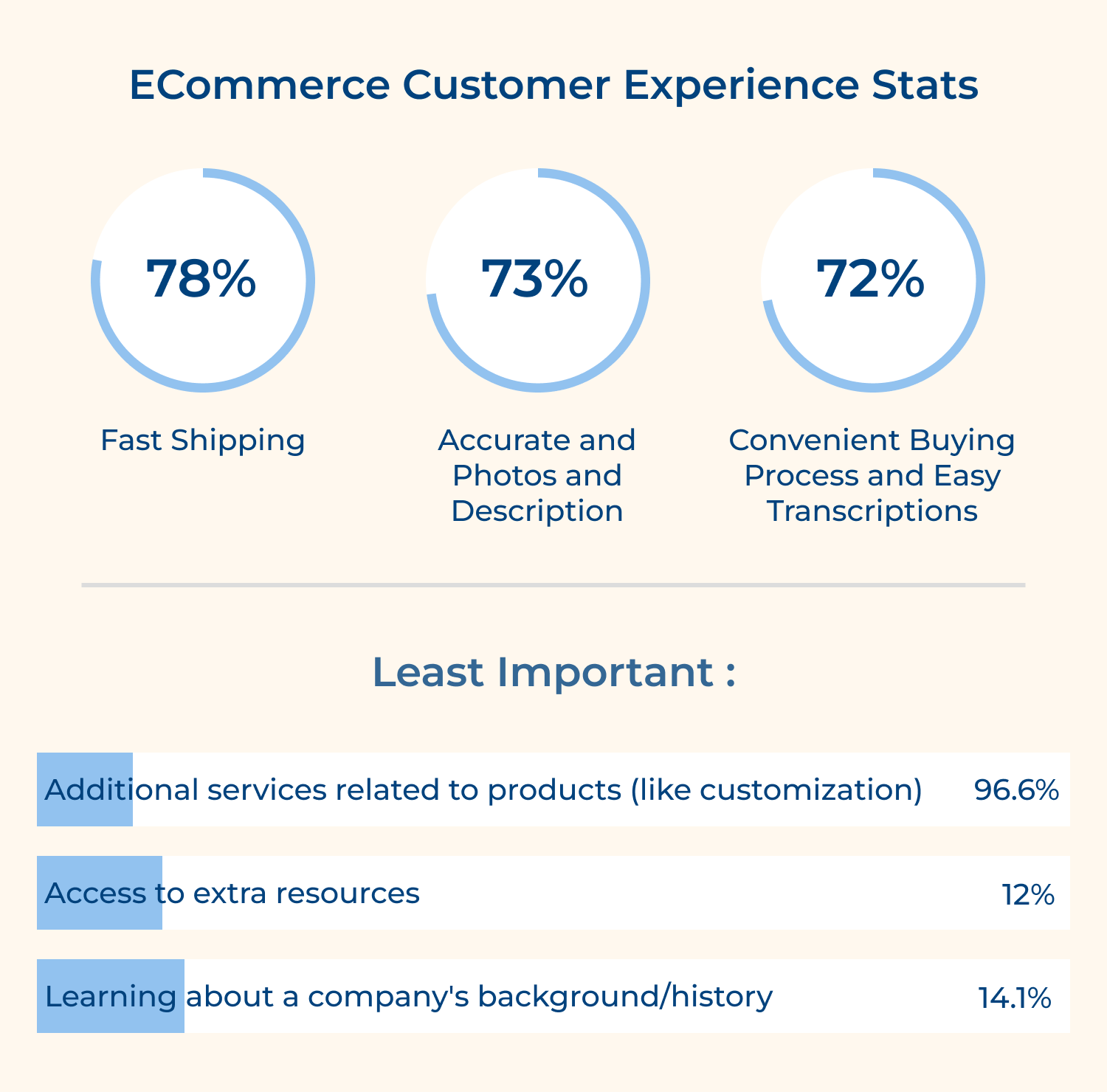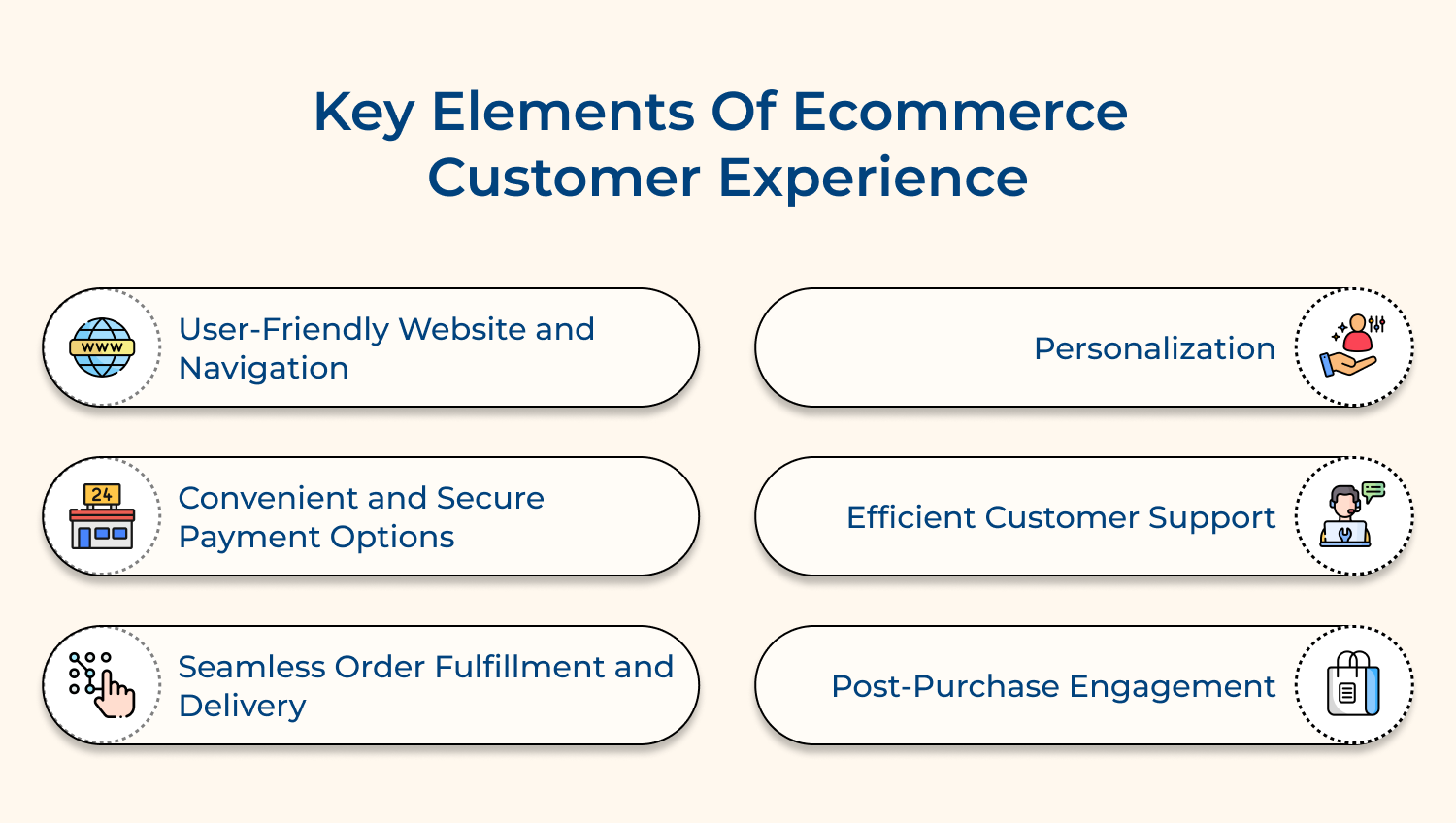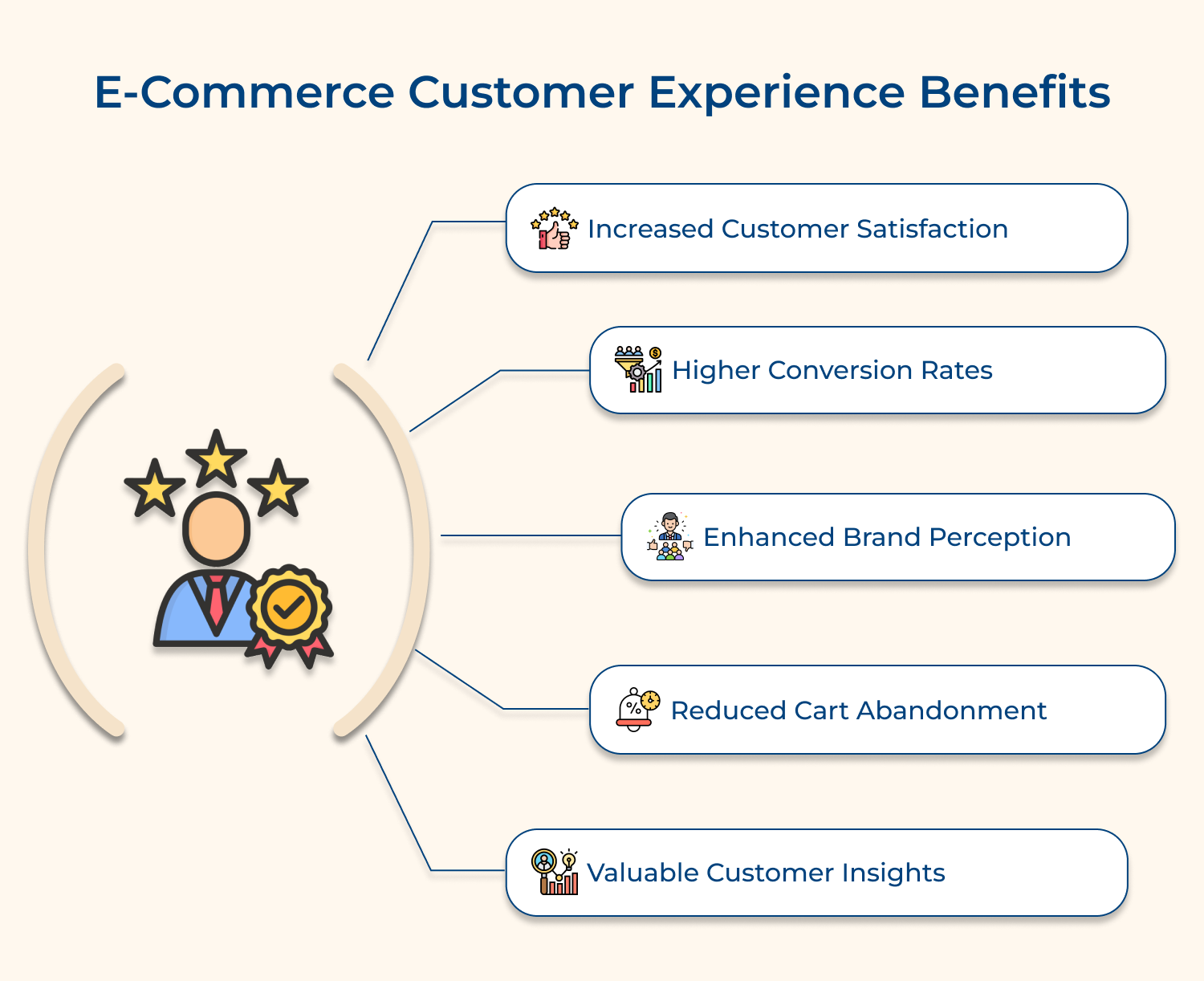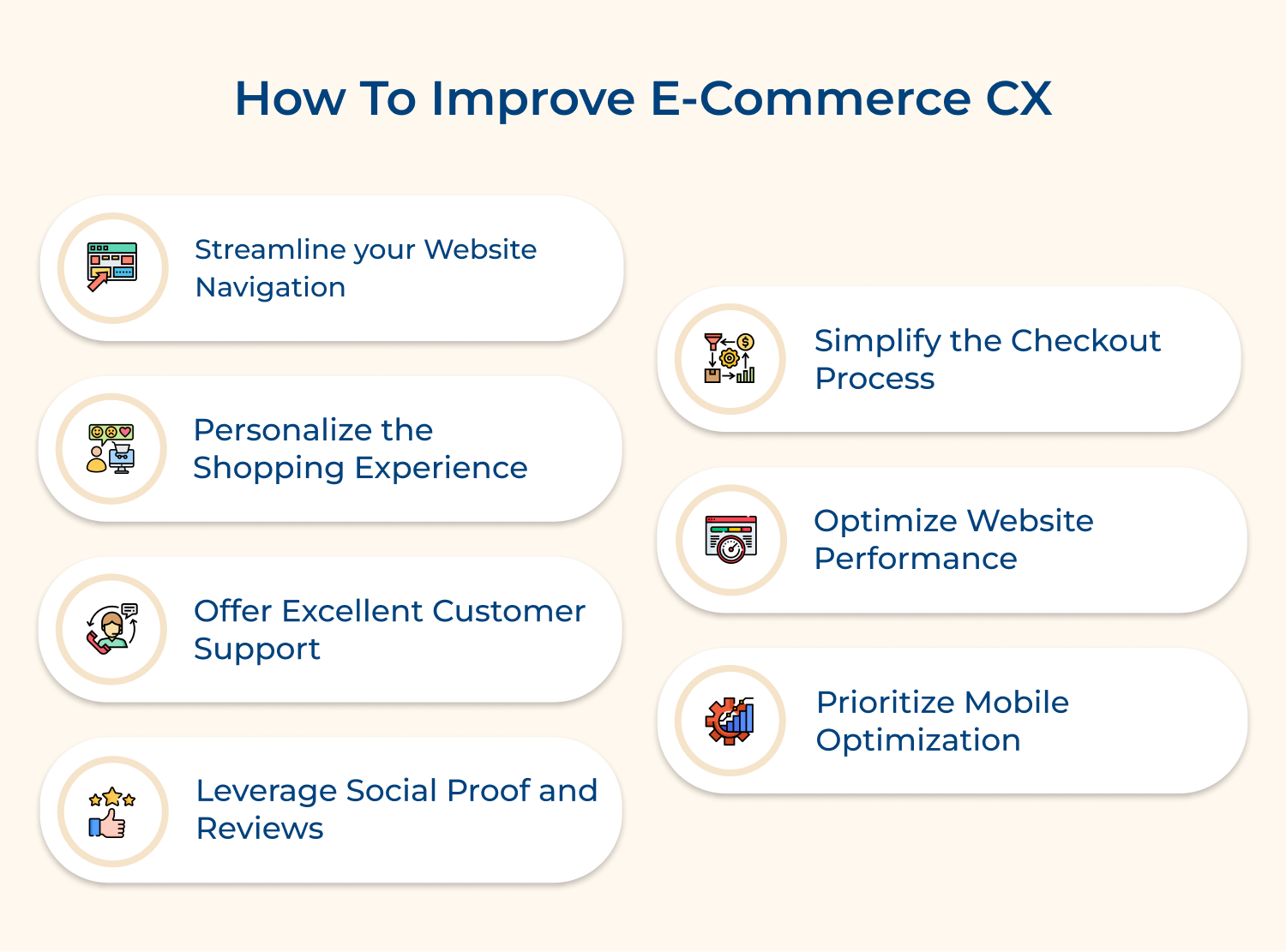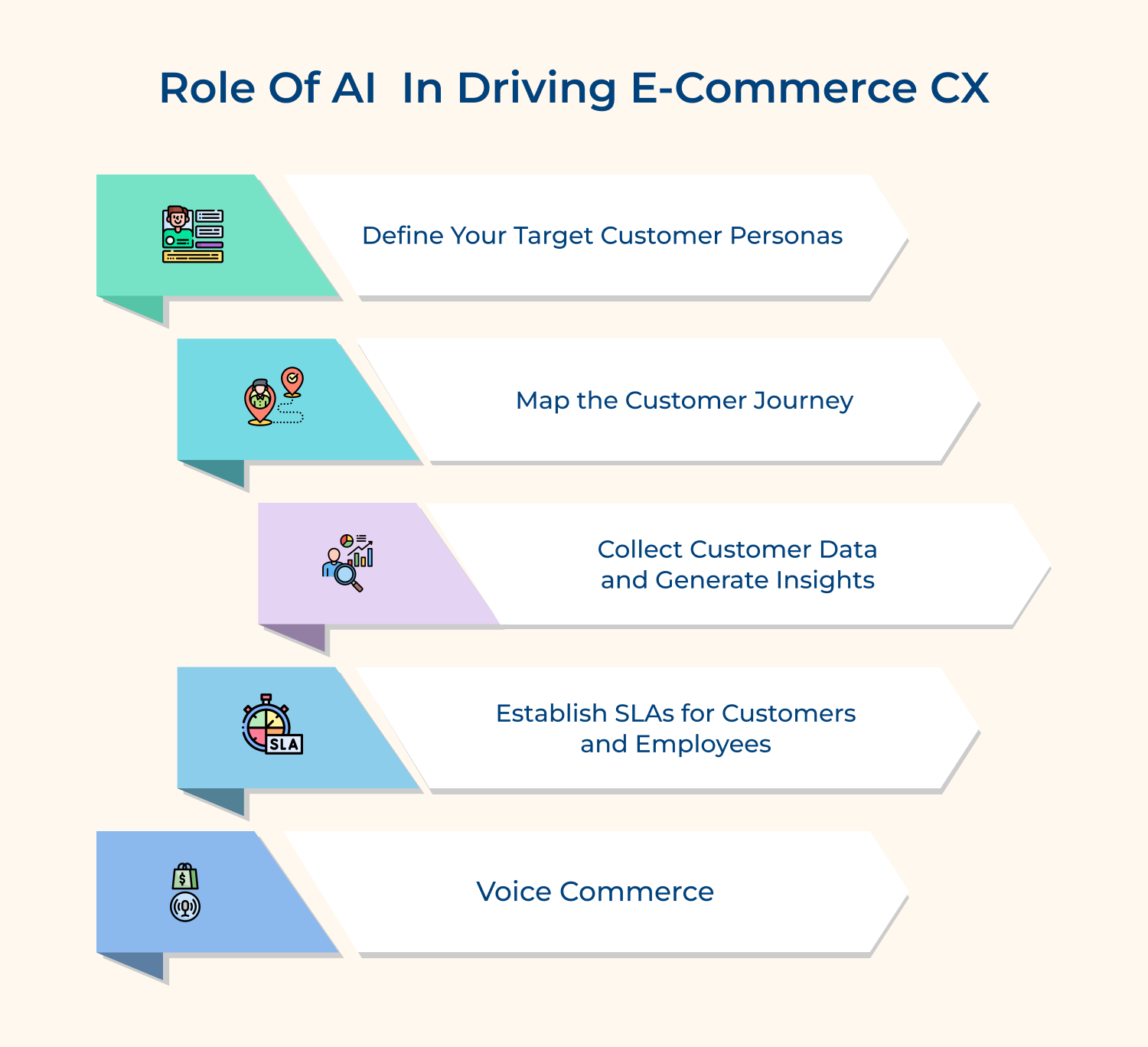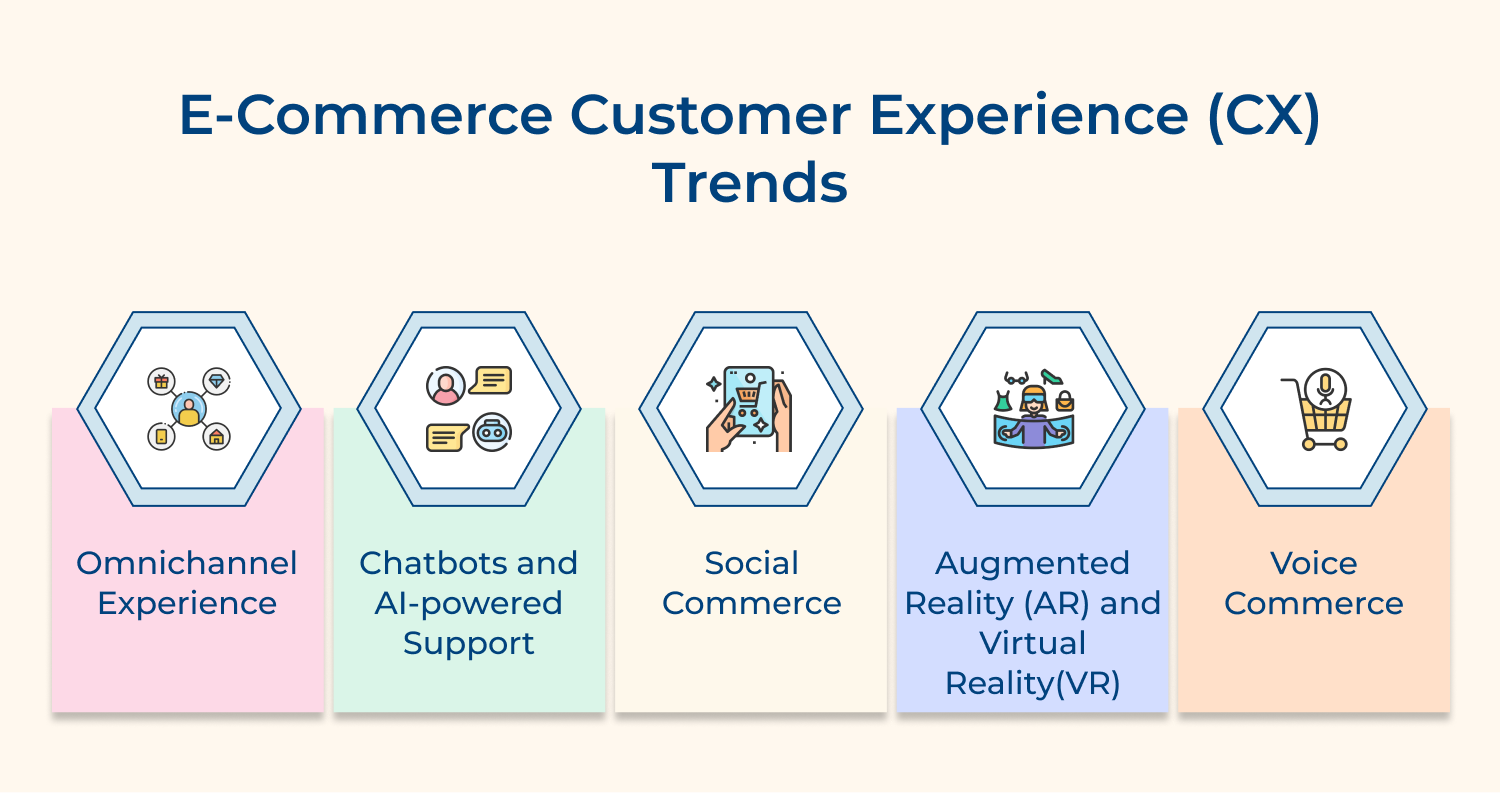1. Streamline Your Website Navigation
Businesses focusing on enhancing their e-commerce customer experience should ensure user-friendly website navigation.
A cluttered website can frustrate customers and cause them to abandon their shopping carts. Conduct a thorough analysis of your website’s layout and optimize it for ease of navigation.
Implement a clear menu, provide a search bar and categorize products in an organized manner. By making it easy for customers to find what they are looking for, you enhance their user experience and increase sales conversions.
Pro tips:
- Simplify menu structure: Consider reducing the number of menu options and organizing them logically to avoid overwhelming visitors.
- Implement search functionality: Ensure the search bar is prominently displayed and offers auto-suggestions to assist customers in finding specific products.
2. Personalize the Shopping Experience
Personalization is a powerful tool to engage customers and build long-lasting relationships. 77% of consumers have chosen, recommended or paid more for a brand that provides a personalized service or experience.
Utilize data analytics to understand customer behavior, preferences and purchasing patterns. Leverage this information to offer targeted promotions and customized content.
Implementing features like personalized homepages, product suggestions based on previous purchases and personalized email marketing can significantly enhance the customer’s experience.
Pro tips:
- Implement personalized product recommendations: Use machine learning algorithms and customer data to recommend relevant products, increasing the chance of conversion.
- Send personalized email campaigns: Tailor email content to customer preferences and recommendations to increase engagement as well as sales.
3. Offer Excellent Customer Support
Providing excellent customer support is essential in the e-commerce sector.
Customer’s concerns should be addressed promptly by offering multiple communication channels such as live chat, email and phone support. It ensures that customers can reach out in the way that is most convenient for them.
Ensure that the customer support team is knowledgeable to assist customers effectively. Investing in customer support tools and training your support staff can go a long way in enhancing the customer experience.
Pro tips:
- Respond promptly: Address customer issues as quickly as possible. Set clear response time expectations and strive to meet or exceed them.
- Offer multiple communication channels: Provide customers with various ways to reach out to you, such as live chat, email, phone and social media. It allows them to choose the method that suits them best.
4. Leverage Social Proof and Reviews
Social proof plays a significant role in influencing customers’ purchasing decisions. 97% of consumers say online reviews impact their purchasing decisions.
Incorporating customer reviews, ratings and testimonials on your website, can build trust and credibility. Positive reviews act as social proof, reassuring potential customers that your products or services are reliable and of high quality.
Encourage customers to leave reviews after their purchase and actively respond to both positive & negative feedback. It shows that you value customer input and also provides an opportunity to address their concerns.
Pro tips:
- Use a variety of channels: Display customer testimonials on your website, incorporate reviews into your email marketing campaigns and encourage customers to leave reviews on popular review platforms.
- Highlight the most relevant reviews: Feature the positive reviews on your website or product pages. These reviews should be authentic and from a diverse range of customers.
5. Simplify the Checkout Process
One of the biggest obstacles to a seamless e-commerce customer experience is a complex checkout process. Lengthy forms, multiple steps, and compulsory registrations can lead to cart abandonment.
Simplify the process by offering guest checkouts, allowing customers to purchase without creating an account, and implementing autofill features for address as well as payment information.
Provide multiple secure payment options, display shipping costs, and delivery timelines. A hassle-free checkout process increases customer satisfaction as well as conversion rates.
Pro tips:
- Provide clear progress indicators: Show customers how many steps are left in the checkout process to keep them engaged and informed.
- Minimize form fields: Only ask for essential information and remove any unnecessary fields that can discourage customers.
6. Optimize Website Performance
A slow-loading website can be a major turn-off for customers.
Studies have shown that even a one-second delay in page load time can lead to a significant drop in conversions.
Businesses should invest in reliable hosting services, optimize images and minimize the use of third-party plugins to optimize website performance. A responsive website will not only improve the customer experience but also positively impact search engine rankings.
Pro tips:
- Streamline navigation: Simplify your website’s navigation by organizing categories and subcategories logically to help customers find what they’re looking for quickly.
- Implement responsive design: Ensure your website is optimized for mobile devices, as more and more customers are shopping on smartphones as well as tablets.
7. Prioritize Mobile Optimization
Mobile optimization has become crucial for e-commerce success with the rise of messaging platforms.
According to Statista, mobile devices accounted for 54.8% of all website traffic worldwide.
Ensure your website is mobile-friendly and responsive, allowing customers to easily navigate and make purchases on their mobile devices.
Optimize page layouts and ensure fast loading times. Implement mobile payment options like Apple Pay or Google Pay for a seamless mobile checkout experience. By prioritizing mobile optimization, you can reach a larger audience and improve sales.
Pro tips:
- Use responsive web design: Responsive design ensures that your website adapts and adjusts to different screen sizes, providing a seamless experience across all devices.
- Optimize loading times: Mobile users have limited patience, so make sure your website loads quickly to prevent potential customers from abandoning your site.
The Role of AI and Automation in Driving E-commerce Customer Experience
AI technologies have become indispensable tools for businesses seeking to enhance customer satisfaction and drive sales in the ever-growing world of e-commerce.

